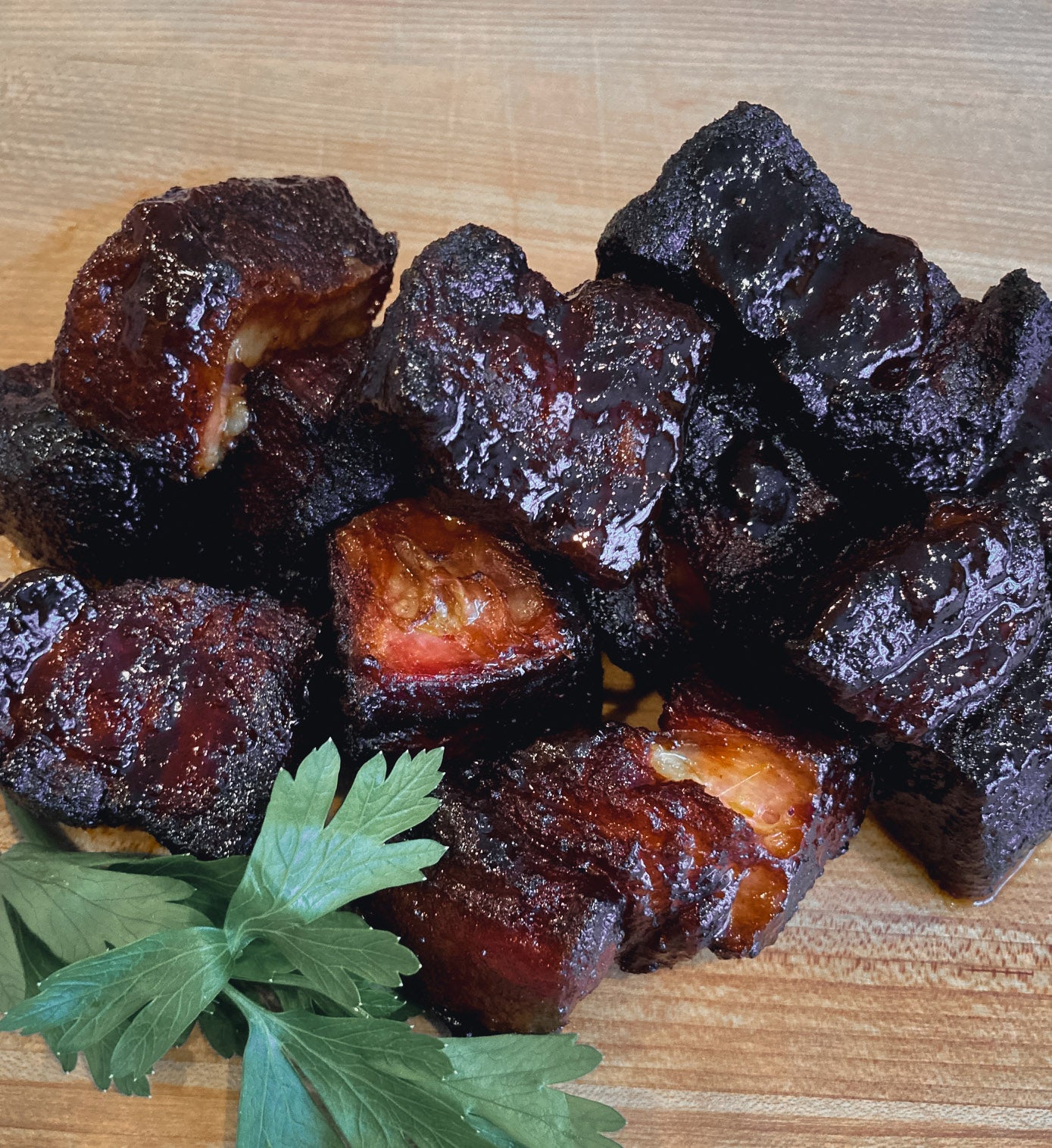What are burnt ends?
Brisket burnt ends are made from the deckle (or point) cut of the brisket. They originated in Kansas City sometime in the 1970s, when barbecue restaurants made sliced brisket sandwiches. The brisket point was crispy, fatty, well-charred, and did not slice very well for a sandwich. The person slicing the brisket would accumulate these little, oddly shaped, heavily smoked pieces on their cutting board. Not knowing what to do with all these little nuggets, they started giving them out to hungry customers as an appetizer, while they waited in line for their order.
It didn’t take long for them to realize they were onto something. Customers started asking for these “burnt ends” to be put on the menu. Today, burnt ends are truly a delicacy in the barbecue world, and usually the first thing to sell out at barbecue restaurants.
How to make brisket burnt ends
There are two different ways to make brisket burnt ends. One way is to slow smoke a whole packer brisket. When it’s done, separate the deckle from the flat cut, cube up the deckle, hit them with a little sauce, and return to the smoker to caramelize further while the flat cut is resting. The other way of achieving burnt ends is to just smoke the deckle cut of the brisket. It may be challenging to find this cut, as it’s typically not sold at a supermarket.
The best way to find the brisket deckle is to source out your local butcher. Butcher shops tend to sell a good amount of briskets and you can ask for just the deckle of the brisket. As a butcher myself, I have an advantage and can usually get my hands on any cut!
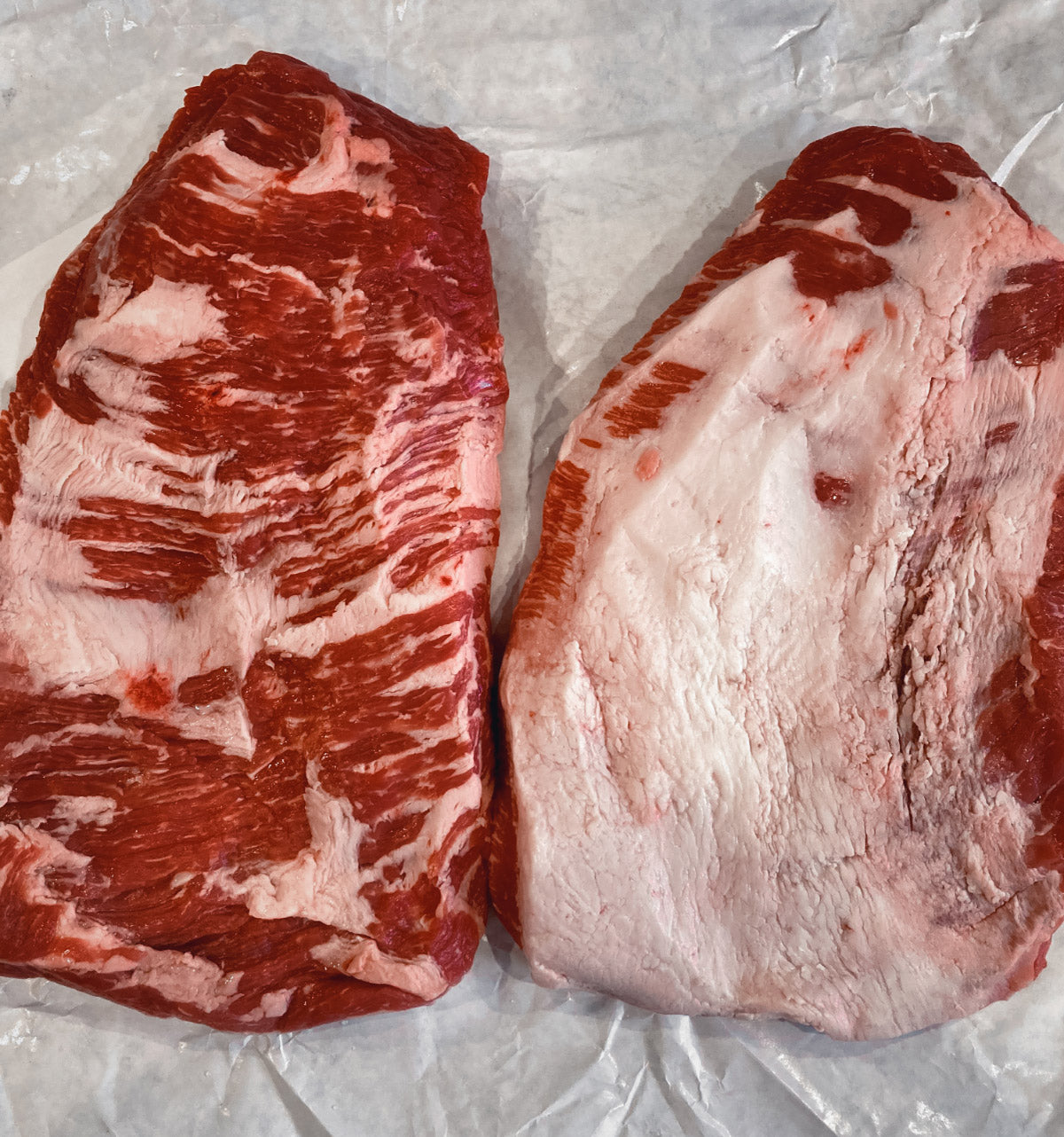
My favorite way of making burnt ends is to smoke a couple of brisket deckles by themselves. I start with seasoning them with Dead Rooster Black Gold coffee dry rub. This semi-spicy chocolate coffee rub is perfect on large pieces of beef like brisket.
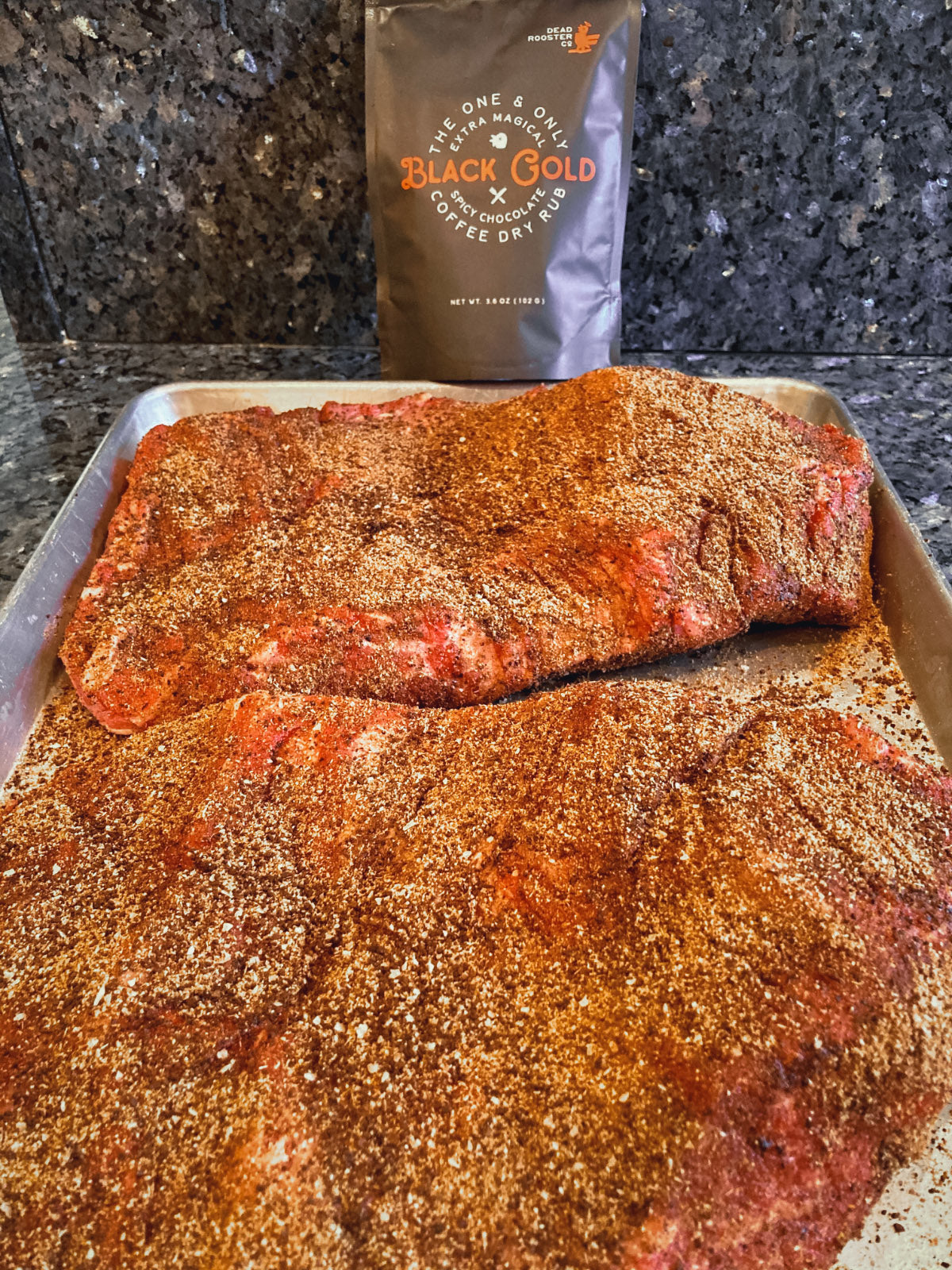
I set my smoker to 275 degrees using pecan wood and smoke the deckles for three hours. Next, I wrap them in foil with a little honey and butter and return them to the smoker for another three hours.
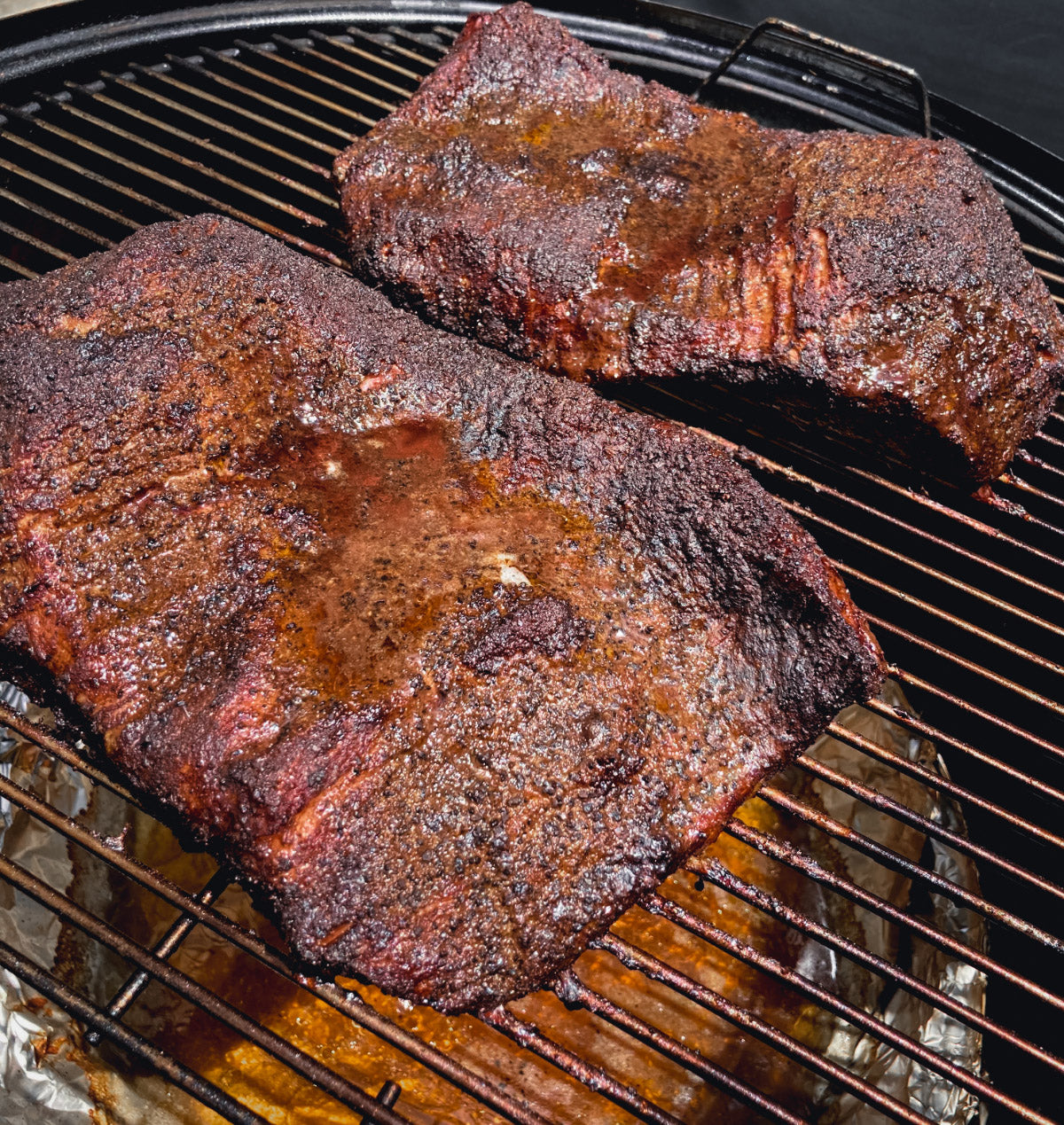
After that, carefully remove the smoked brisket from the foil and reserve the liquid to make a sauce later on. Wrap the brisket deckles in new foil and allow them to rest for about an hour. While resting, take the reserved liquid, skim off the fat and mix it with some of your favorite BBQ sauce. Cut the meat into 1 ½ inch cubes, place in a pan, and pour the sauce over the pieces and toss. Return the pan to the smoker uncovered to caramelize for about 30-45 minutes.

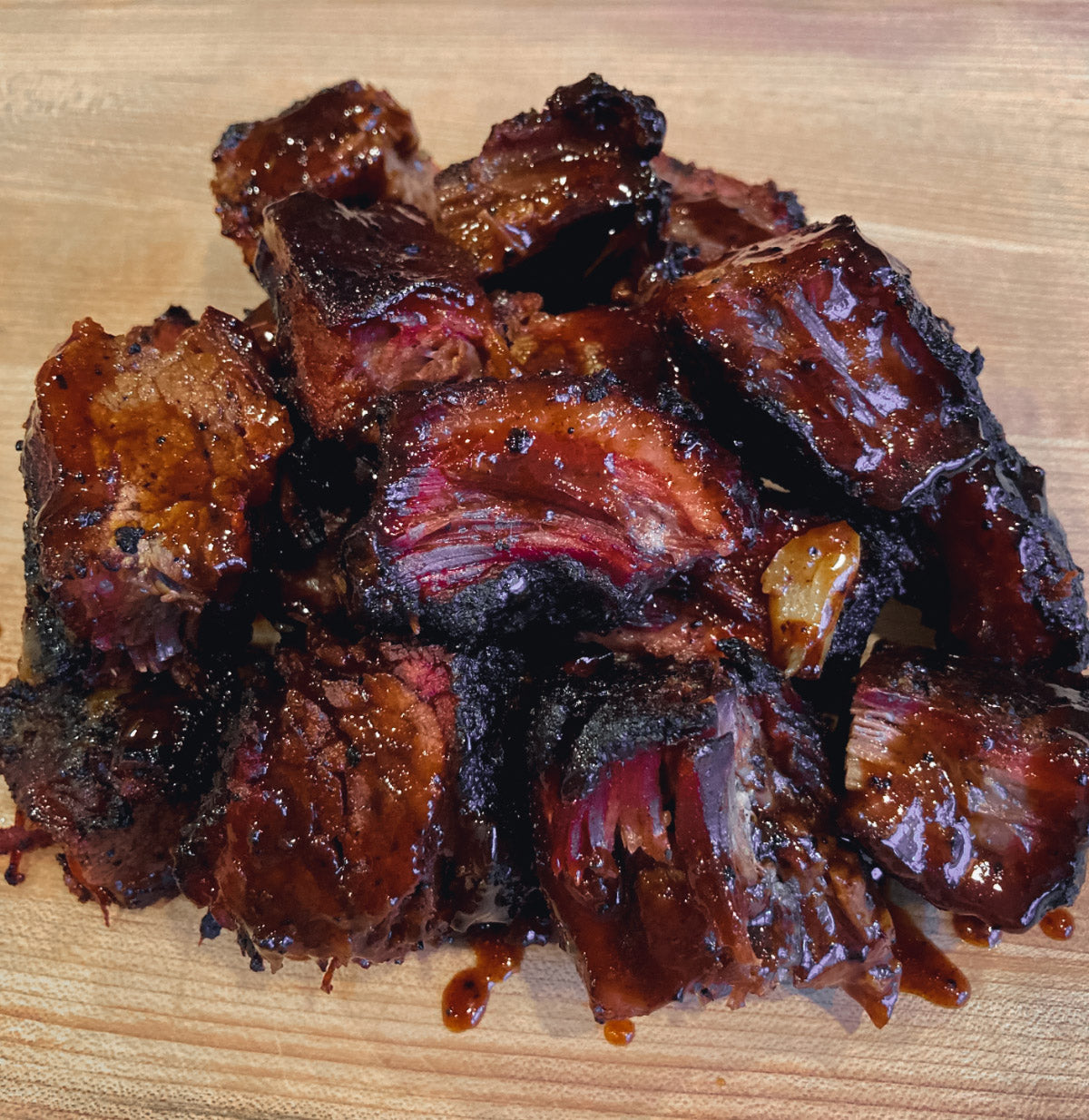
How to smoke pork belly burnt ends
Another kind of “burnt ends” gaining in popularity lately is pork belly burnt ends. I know, I know, it’s not a true burnt end, but these are the ultimate meat candy treat. I just love the way the fat cap renders down, the meat gets tender, and the outside gets that perfect caramelization on it. Pork belly is typically pretty easy to find at your local market. Look for one without skin that has a good meat to fat ratio, not too fatty and not too lean. And by the way, this is the same cut of pork that is used in making bacon and perfect for any burnt ends recipe.
I prefer a belly that is about 4-5 pounds. Cube it into 1.5-2 inch pork belly cubes, lay them flat on an aluminum pan, and season them with your favorite BBQ rub. My favorite rub for this is Dead Rooster’s Redwood BBQ dry rub. It has that perfect blend of sweet and salty which works best for pork belly burnt ends.
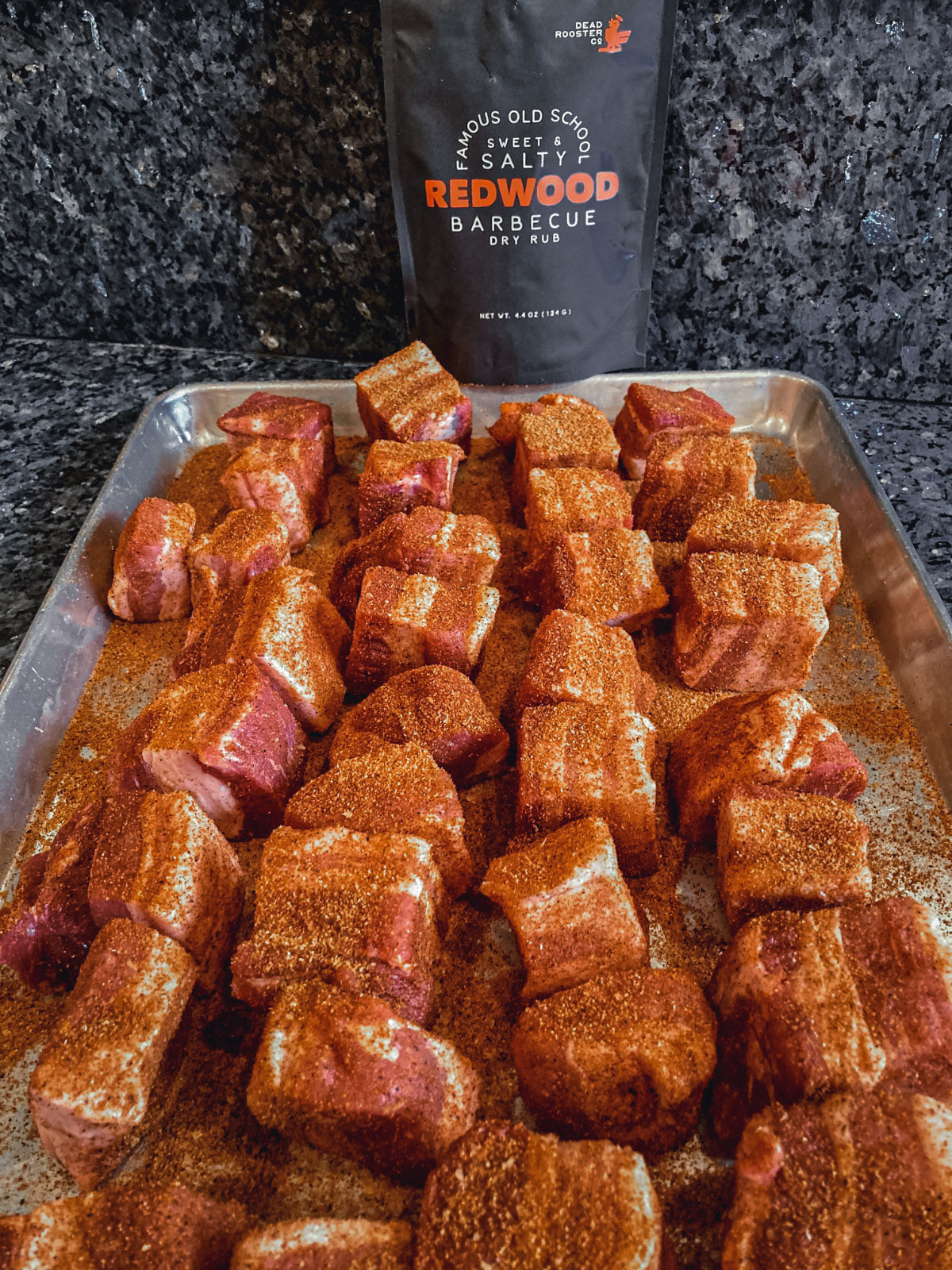
Cover the pan and place it in the fridge for a couple of hours. In the meantime, set up your smoker at 250 degrees. I use applewood chunks to get that perfect smoke flavor. Place the pork cubes on the wire rack of your smoker and cook for 2 hours.

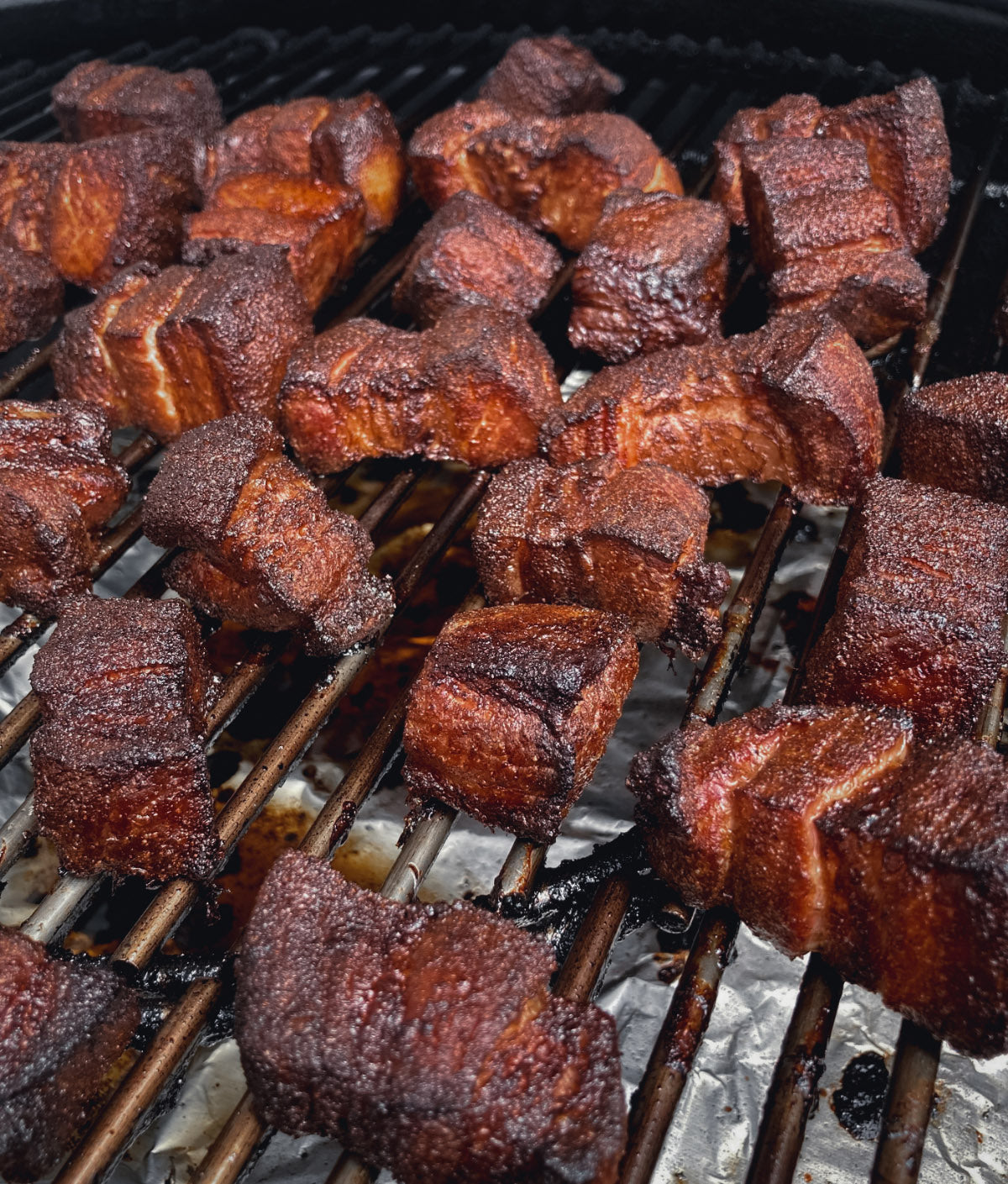
Place the smoked nuggets in a disposable pan and coat with your favorite BBQ sauce, a little honey, brown sugar, and a few slices of butter on top. Cover tightly with foil and return the pan to the smoker for about 90 minutes.
Remove the foil and toss the cubes to coat them. Leave the pan on the smoker uncovered for 30 minutes or until the sauce has thickened. You can serve this as an appetizer, for tacos, in nachos, or simply place them on a bun for a sandwich.
